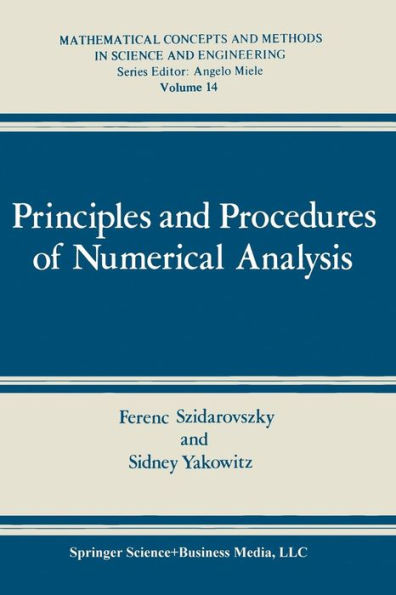Principles and Procedures of Numerical Analysis
It is an incontestable fact that numerical analysis techniques are used rou tinely (although not always effectively) in virtually every quantitative field of scientific endeavor. In this book, which is directed toward upper-division and graduate level students in engineering and mathematics, we have selected for discussion subjects that are traditionally found in numerical analysis texts. But our choice of methodology rejects the traditional where analysis and experience clearly warrant such a departure, and one of our primary aspirations in this work is to equip the reader with the wherewithal to apply numerical analysis thinking to nontraditional subjects. For there is a plethora of computer-oriented sciences such as optimization, statistics, and system analysis and identification that are sorely in need of methods comparable to those related here for classical numerical analysis problems. Toward uncovering for the reader the structure of numerical methods we have, for example, devoted a chapter to a metric space theory for iter ative application of operators. In this chapter, we have collected those definitions and concepts of real and functional analysis that are requisite to a modern intermediate-level exposition of the principles of numerical analysis. Further, we derive the abstract theory (most notably, the contraction mapping theorem) for iteration processes.
1012939031
Principles and Procedures of Numerical Analysis
It is an incontestable fact that numerical analysis techniques are used rou tinely (although not always effectively) in virtually every quantitative field of scientific endeavor. In this book, which is directed toward upper-division and graduate level students in engineering and mathematics, we have selected for discussion subjects that are traditionally found in numerical analysis texts. But our choice of methodology rejects the traditional where analysis and experience clearly warrant such a departure, and one of our primary aspirations in this work is to equip the reader with the wherewithal to apply numerical analysis thinking to nontraditional subjects. For there is a plethora of computer-oriented sciences such as optimization, statistics, and system analysis and identification that are sorely in need of methods comparable to those related here for classical numerical analysis problems. Toward uncovering for the reader the structure of numerical methods we have, for example, devoted a chapter to a metric space theory for iter ative application of operators. In this chapter, we have collected those definitions and concepts of real and functional analysis that are requisite to a modern intermediate-level exposition of the principles of numerical analysis. Further, we derive the abstract theory (most notably, the contraction mapping theorem) for iteration processes.
54.99
In Stock
5
1

Principles and Procedures of Numerical Analysis
331
Principles and Procedures of Numerical Analysis
331Paperback(Softcover reprint of the original 1st ed. 1978)
$54.99
54.99
In Stock

Product Details
| ISBN-13: | 9780306400872 |
|---|---|
| Publisher: | Springer US |
| Publication date: | 01/01/1978 |
| Series: | Mathematical Concepts and Methods in Science and Engineering , #14 |
| Edition description: | Softcover reprint of the original 1st ed. 1978 |
| Pages: | 331 |
| Product dimensions: | 5.98(w) x 9.02(h) x 0.03(d) |
From the B&N Reads Blog
